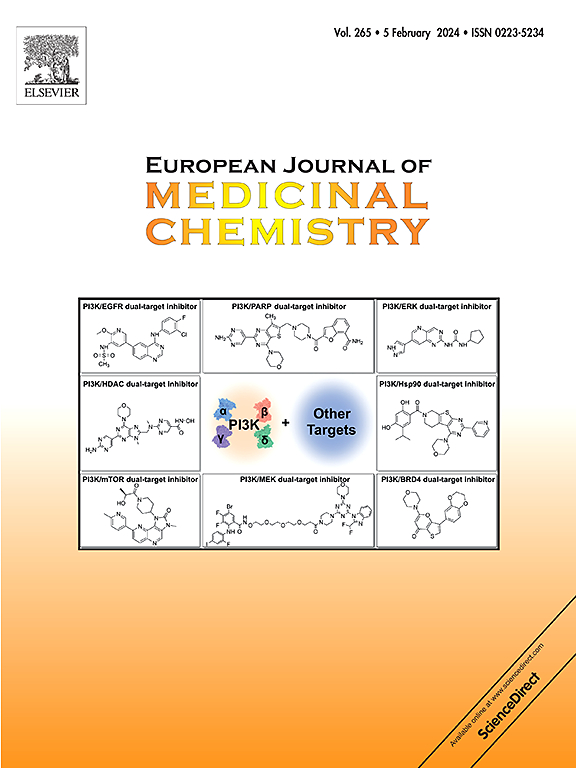基于结构的深度学习生物活性优化模型及其在SARS-CoV-2主要蛋白酶抑制剂生物活性优化中的应用
IF 6
2区 医学
Q1 CHEMISTRY, MEDICINAL
引用次数: 0
摘要
在药物发现的早期阶段,生物活性优化是一项至关重要的技术任务,传统上通过迭代取代基优化进行,这一过程通常既耗时又昂贵。为了应对这一挑战,我们提出了Pocket-StrMod,这是一种为基于结构的生物活性优化量身定制的深度学习模型。pocket - strmod采用了一种自回归的基于流动的结构,优化了特定蛋白质结合口袋内的分子,同时明确地结合了化学专业知识。它通过在蛋白质口袋内的分子支架内的指定位置产生原子和共价键来同步优化所有取代基。我们利用该模型优化了一种初始生物活性较差(IC50: 34.56 μM)的SARS-CoV-2主要蛋白酶(Mpro)抑制剂Hit1的生物活性。经过两轮优化,筛选出6个化合物进行合成和生物活性测试。这导致了C5的发现,这是一种有效的化合物,IC50值为33.6 nM,比Hit1显著提高了1028倍。此外,C5在体外对SARS-CoV-2表现出有希望的抗病毒活性。总的来说,这些发现强调了深度学习在促进药物开发早期阶段快速和具有成本效益的生物活性优化方面的巨大潜力。本文章由计算机程序翻译,如有差异,请以英文原文为准。


A deep learning model for structure-based bioactivity optimization and its application in the bioactivity optimization of a SARS-CoV-2 main protease inhibitor
Bioactivity optimization is a crucial and technical task in the early stages of drug discovery, traditionally carried out through iterative substituent optimization, a process that is often both time-consuming and expensive. To address this challenge, we present Pocket-StrMod, a deep-learning model tailored for structure-based bioactivity optimization. Pocket-StrMod employs an autoregressive flow-based architecture, optimizing molecules within a specific protein binding pocket while explicitly incorporating chemical expertise. It synchronously optimizes all substituents by generating atoms and covalent bonds at designated sites within a molecular scaffold nestled inside a protein pocket. We applied this model to optimize the bioactivity of Hit1, an inhibitor of the SARS-CoV-2 main protease (Mpro) with initially poor bioactivity (IC50 : 34.56 μM). Following two rounds of optimization, six compounds were selected for synthesis and bioactivity testing. This led to the discovery of C5, a potent compound with an IC50 value of 33.6 nM, marking a remarkable 1028-fold improvement over Hit1. Furthermore, C5 demonstrated promising in vitro antiviral activity against SARS-CoV-2. Collectively, these findings underscore the great potential of deep learning in facilitating rapid and cost-effective bioactivity optimization in the early phases of drug development.
求助全文
通过发布文献求助,成功后即可免费获取论文全文。
去求助
来源期刊
CiteScore
11.70
自引率
9.00%
发文量
863
审稿时长
29 days
期刊介绍:
The European Journal of Medicinal Chemistry is a global journal that publishes studies on all aspects of medicinal chemistry. It provides a medium for publication of original papers and also welcomes critical review papers.
A typical paper would report on the organic synthesis, characterization and pharmacological evaluation of compounds. Other topics of interest are drug design, QSAR, molecular modeling, drug-receptor interactions, molecular aspects of drug metabolism, prodrug synthesis and drug targeting. The journal expects manuscripts to present the rational for a study, provide insight into the design of compounds or understanding of mechanism, or clarify the targets.

 求助内容:
求助内容: 应助结果提醒方式:
应助结果提醒方式:


